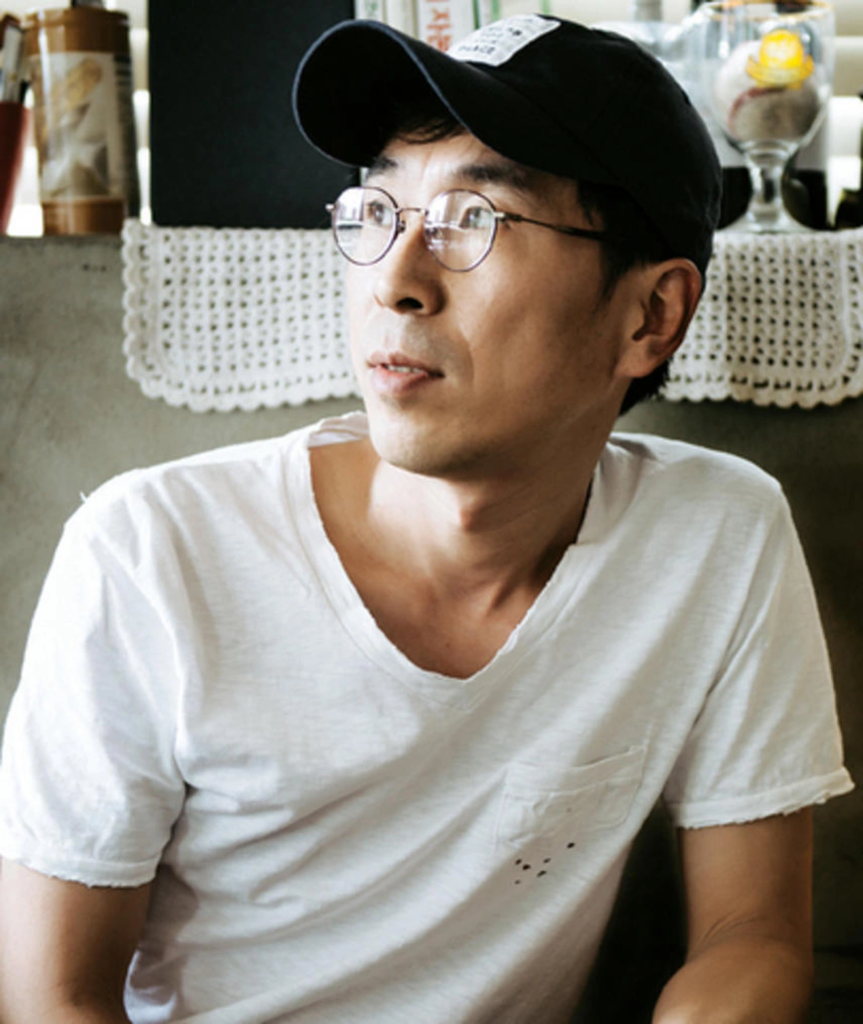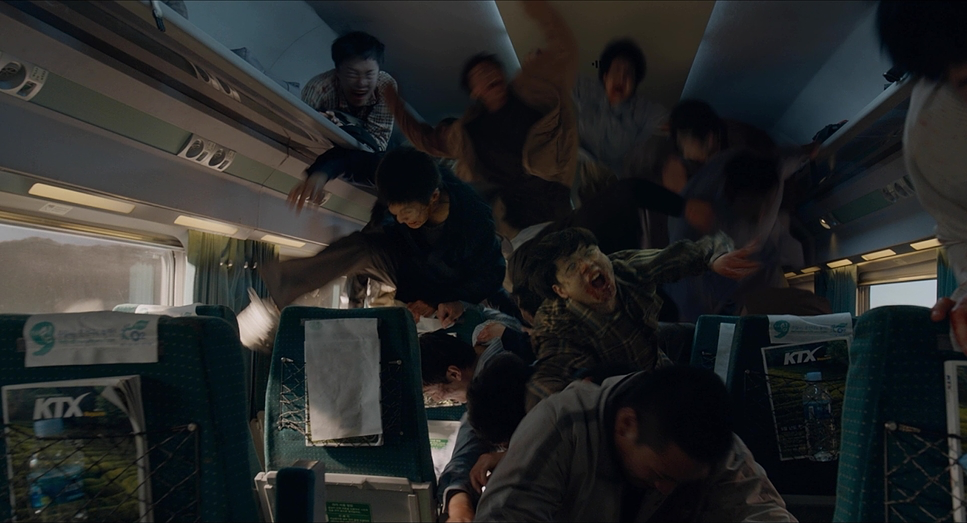My name is Salik Waquas, and I own a post-production color grading suite. As a filmmaker and colorist, I have always been captivated by the power of visual storytelling and how it can elevate a narrative beyond its script. “Train to Busan,” directed by Yeon Sang-ho, is a film that not only delivers an intense and emotional narrative but also showcases exceptional cinematography. In this analysis, I will delve into the various elements that make the cinematography of “Train to Busan” a masterclass in visual storytelling.
About the Cinematographer

The visual brilliance of “Train to Busan” is largely attributed to its cinematographer, Lee Hyung-deok. Known for his ability to craft dynamic and emotionally resonant visuals, Lee has a reputation for blending realism with stylistic intensity. His previous works, such as “The Host” (2006), exhibit his skill in integrating genre elements with compelling imagery. In “Train to Busan,” Lee expertly balances the frenetic chaos of a zombie outbreak with intimate character moments, capturing the essence of human vulnerability amidst relentless danger.
Inspiration for the Cinematography of “Train to Busan”

The cinematography draws inspiration from the claustrophobic nature of train travel and the societal themes prevalent in South Korean cinema. The confined setting of a moving train presents unique challenges and opportunities for visual storytelling. Lee Hyung-deok utilizes this environment to heighten tension and create a sense of urgency. The influence of films like “World War Z” and “Snowpiercer” is evident in the way confined spaces and relentless threats are used as narrative tools. However, “Train to Busan” elevates these tropes with a distinctly Korean perspective, weaving cultural subtext and societal commentary into its visual framework.
🎬 A Note from Salik:
I often get asked how I achieve the dense, filmic look in my commercial work. The secret isn't just color grading—it's the starting point. I have finally released my personal Master LUT Pack—8 distinct looks based on real film.
These aren't simple presets; they were crafted using complex math, empirical data, and precise tetrahedral operations to ensure technical integrity. This is the exact collection I've built over the years and used on 200+ high-end commercials.
*Compatible with Davinci Resolve, Premiere Pro, and FCPX.
Camera Movements Used in “Train to Busan”

The camera movements are meticulously crafted to amplify both the urgency of the action and the emotional beats of the story. During intense sequences, rapid dolly shots and handheld cameras create a visceral, immersive experience. The camera often mirrors the panic of the characters, swinging and shaking as zombies close in, which heightens the tension and places the audience right in the midst of the chaos.
Conversely, smoother tracking shots are employed to follow characters through the narrow train corridors, maintaining a sense of continuity and spatial awareness. One standout technique is the use of long takes during scenes where characters navigate through zombie-infested cars. These real-time sequences create an unrelenting sense of peril, emphasizing the characters’ resourcefulness and the continuous threat they face.
Compositions in “Train to Busan”

Compositionally, the film leverages its confined setting to craft visually striking frames. The use of tight framing within the train’s limited spaces emphasizes the characters’ entrapment and vulnerability. Lee often uses depth of field to layer characters and zombies within the tight corridors, creating a palpable sense of claustrophobia.
The compositions frequently juxtapose order and chaos: survivors are framed in orderly, linear arrangements, symbolizing their attempts to maintain control, while zombies are depicted as chaotic, swarming masses that disrupt visual symmetry. Strategic placement of characters within the frame reflects their relationships and emotional states, adding layers of meaning to the visual narrative.
Lighting Style of “Train to Busan”

Lighting plays a crucial role in shaping the film’s mood and atmosphere. Naturalistic lighting is predominantly used, with the train’s interior lights and natural sunlight enhancing realism during daytime scenes. As the outbreak intensifies, the lighting shifts to starker contrasts, with harsh shadows and dramatic highlights emphasizing the escalating danger.
In scenes where the train passes through tunnels or experiences power outages, the resulting darkness is used to heighten suspense and underscore the characters’ perilous situation. The interplay between light and shadow not only enhances the visual tension but also reinforces themes of fear and uncertainty. Additionally, the zombies’ reliance on sight is cleverly exploited, as darkness becomes both a shield and a weapon for the survivors.
Lensing and Blocking of “Train to Busan”

The choice of lenses and meticulous blocking significantly contribute to the film’s visual storytelling. Wide-angle lenses are often used to capture the cramped interiors, providing a comprehensive view of the action while accentuating the feeling of entrapment. Close-ups and medium shots are strategically employed to focus on characters’ emotions, drawing the audience into their personal struggles.
Blocking is intricately planned, especially during action scenes where characters must navigate crowded, narrow spaces. The choreography ensures that each movement serves the story, guiding the audience’s attention and maintaining narrative clarity. One notable sequence involves characters fighting their way through zombie-infested cars, where lens choice and blocking create a kinetic energy that emphasizes the physicality of their struggle.
Color Grading of “Train to Busan”

As a colorist, I find the film’s color grading particularly compelling. The palette transitions from warmer tones in the opening scenes—reflecting normalcy and everyday life—to cooler, desaturated hues as the outbreak unfolds. This shift mirrors the emotional and moral descent of the characters as they grapple with survival.
Subtle use of color also delineates class and character arcs. Wealthier characters are often associated with colder, more sterile tones, while warmer, earthy colors are used to represent family and community connections. Moments of hope and humanity are highlighted through selective color grading, reinforcing the film’s themes of resilience and solidarity amidst chaos.
Technical Aspects of “Train to Busan”
From a technical standpoint, “Train to Busan” is a masterclass in seamless execution. The film was shot using the Arri Alexa XT M and Arri Alexa XT Plus cameras, paired with Cooke S4/i and Fujinon Alura lenses. This combination provided the filmmakers with the flexibility to capture high-quality images in the challenging environment of a moving train. The Arri Alexa’s dynamic range and the Cooke lenses’ characteristic warmth contributed to the film’s distinctive visual aesthetic.
Practical effects are extensively used, grounding the film in gritty realism. The restrained use of CGI ensures that the visual effects enhance rather than overpower the narrative. The zombie choreography is meticulously coordinated, with each actor’s movements contributing to the film’s horrifying aesthetic. Sound design further elevates the tension, with guttural zombie growls and the screeching of train brakes heightening the sense of impending doom. The editing maintains a relentless pace without becoming disorienting, ensuring that viewers remain engaged throughout the film.
- Also Read: CINEMATOGRAPHY ANALYSIS OF TOUCH OF EVIL (IN DEPTH)
- Also Read: CINEMATOGRAPHY ANALYSIS OF TITANIC (IN DEPTH)
Browse Our Cinematography Analysis Glossary
Explore directors, cinematographers, cameras, lenses, lighting styles, genres, and the visual techniques that shape iconic films.
Explore Glossary →